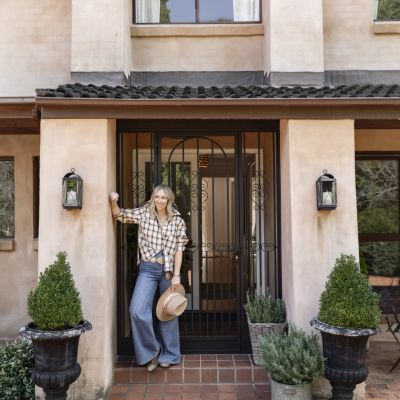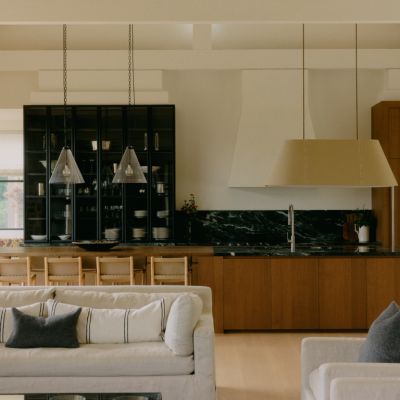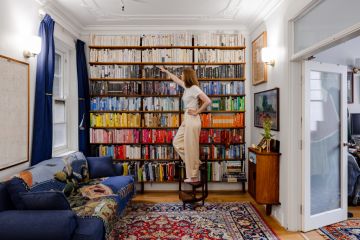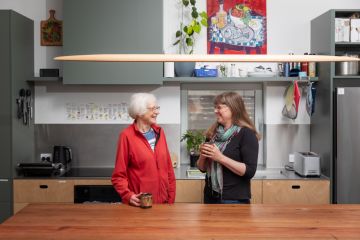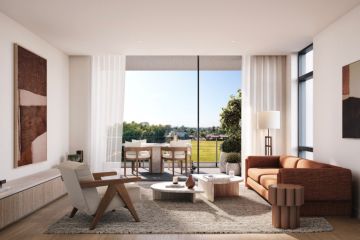How to do coastal style without clichés: Tamsin Johnson’s chic Mermaid Beach home
Coastal style, with its obvious beachy elements like bowls of seashells, anchor wall hangings and fisherman’s netting, appears in everything from the classic fisherman’s shack to the sleek, modern glass masterpiece. But while these design details are on theme, they can quickly veer into cliche and kill creativity.
So how do you design a beach house that feels effortlessly coastal without slipping into kitsch?
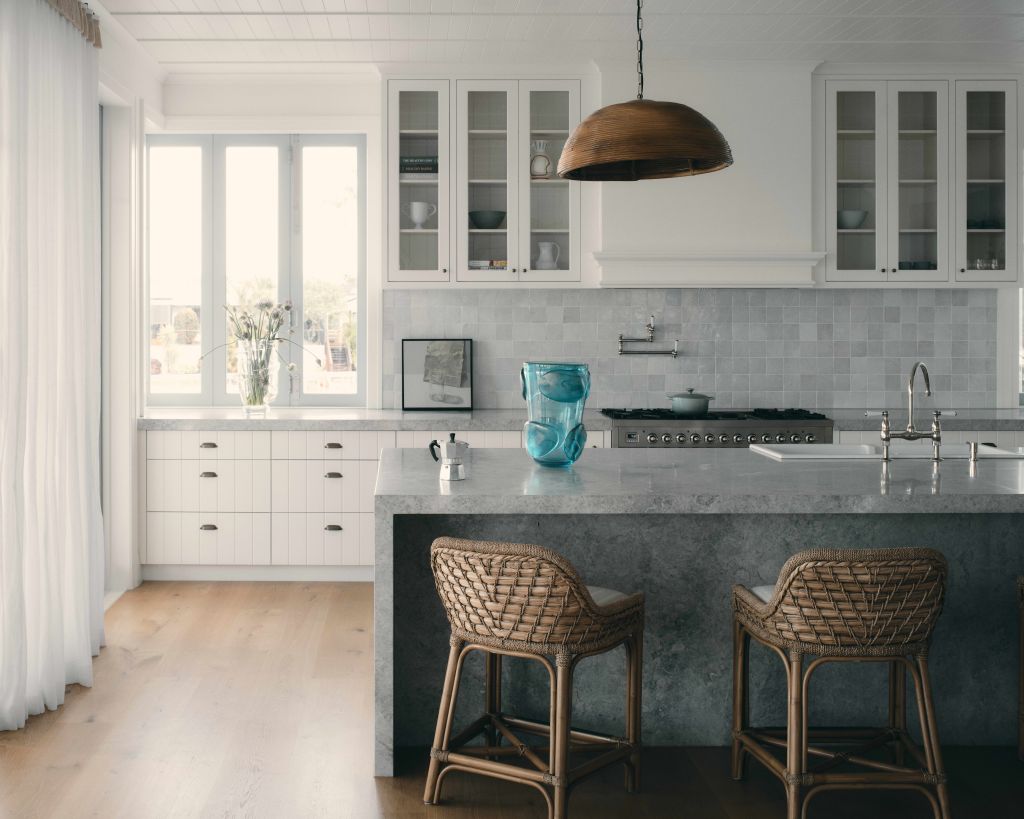
For this Mermaid Beach project on the Gold Coast canals, designer Tamsin Johnson set aside the typical seaside banalities to create a chic elevated beach retreat that draws on influences such as art deco style, the classic Queenslander, and American and European design.
Johnson worked closely with architecture firm Hicks & Holmested and used vintage pieces and natural finishes to craft a new home that feels polished yet well-lived-in.
The result is a home that articulates coastal ambience without being excessively thematic.
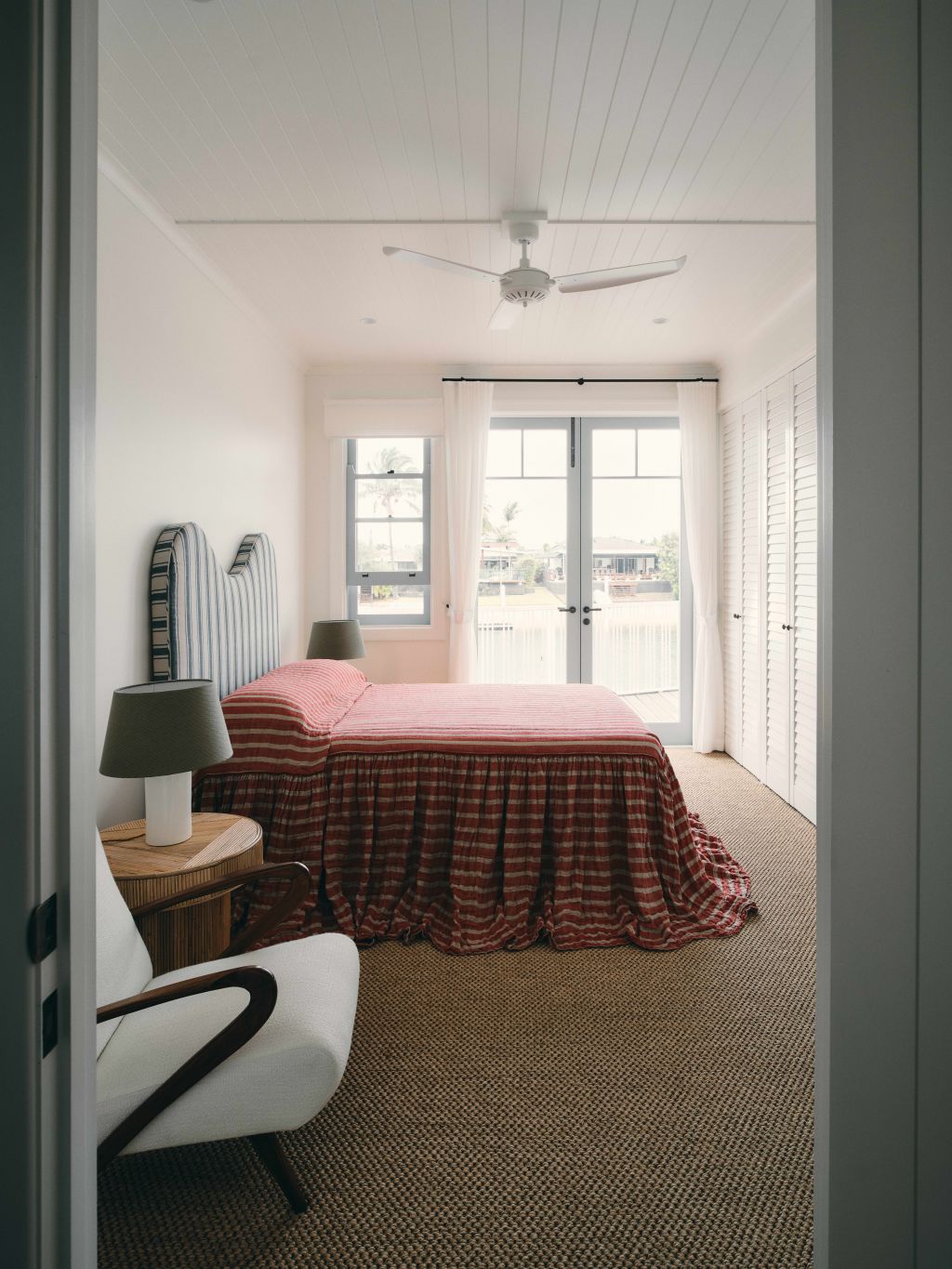
Johnson says the house “had to not look twee and have great functionality – I wanted the levity and freshness of a big beach house but with some much-needed formality and maturity at the same time”.
Veering away from predictable aqua or sea blue, Johnson took a more subtle approach, creating a white textural backdrop for her coastal styling.
“Timber, whether it is whitewashed into classic shiplap or natural as floorboards or cabinetry, is always sensual, organic and warming,” she says. “The softening of an austere whitewash is important, whether it is matt or gloss or a more complex texture such as Venetian plaster or stucco.
“There is something instinctive and organic about surface texture on walls – it feeds into more subconscious human reactions. It’s subtle but very important.”
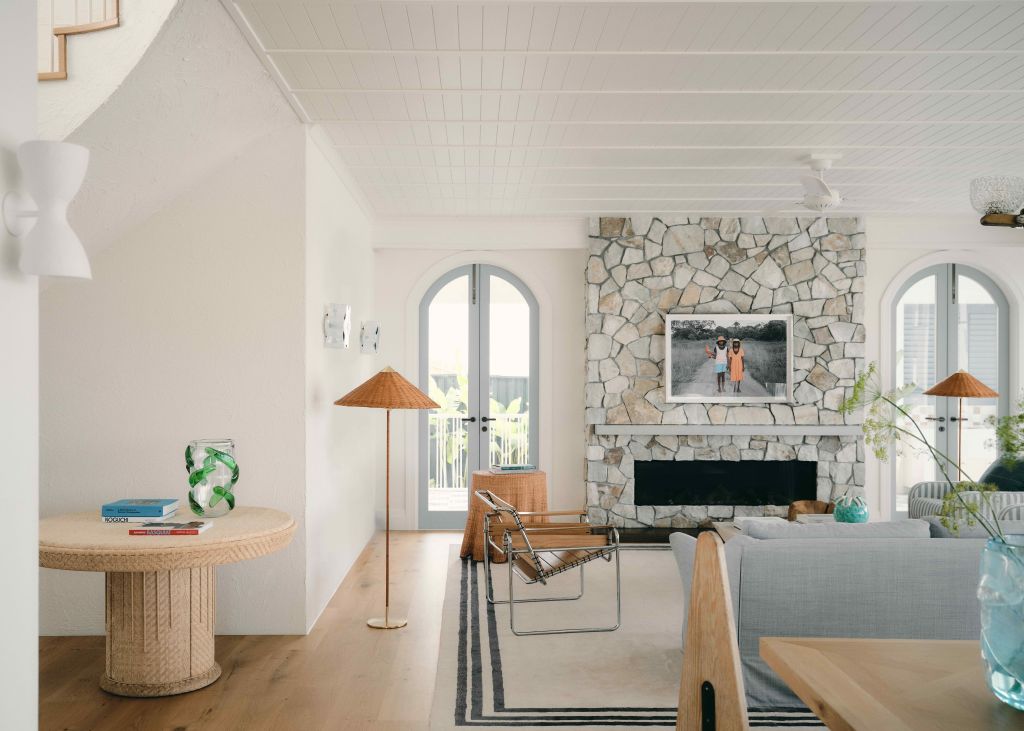
There are no saturated, sun-drenched colours here; instead, Johnson applied gentle, grounding earthy shades with an antique quality – dusty-oily blues, pale golds, soft grey stone, knocked-back Indian yellows and washed-out terracotta, as well as materials such as sisal and grey and white marbles.
“I love the cooler greys in the stone and the language they share with the blues to pull the temperature down,” she says. “The red and yellow-based shades are very desaturated and natural, so there is no colour noise or collision. It necessarily pre-ages the home and allows it to be more calming.
“I think despite the subtlety, I always aim for the underlying colour to be fresh, so it doesn’t risk being drab.”
Johnson’s subtle and abstract nods to beach style – dusty blue shutters, ceramic shell wall sconces, wave-like curves, a bathroom mirror that recalls a ship’s wheel, and red-and-tan striped bedlinen – are a playful nod to their location, minus the twee.
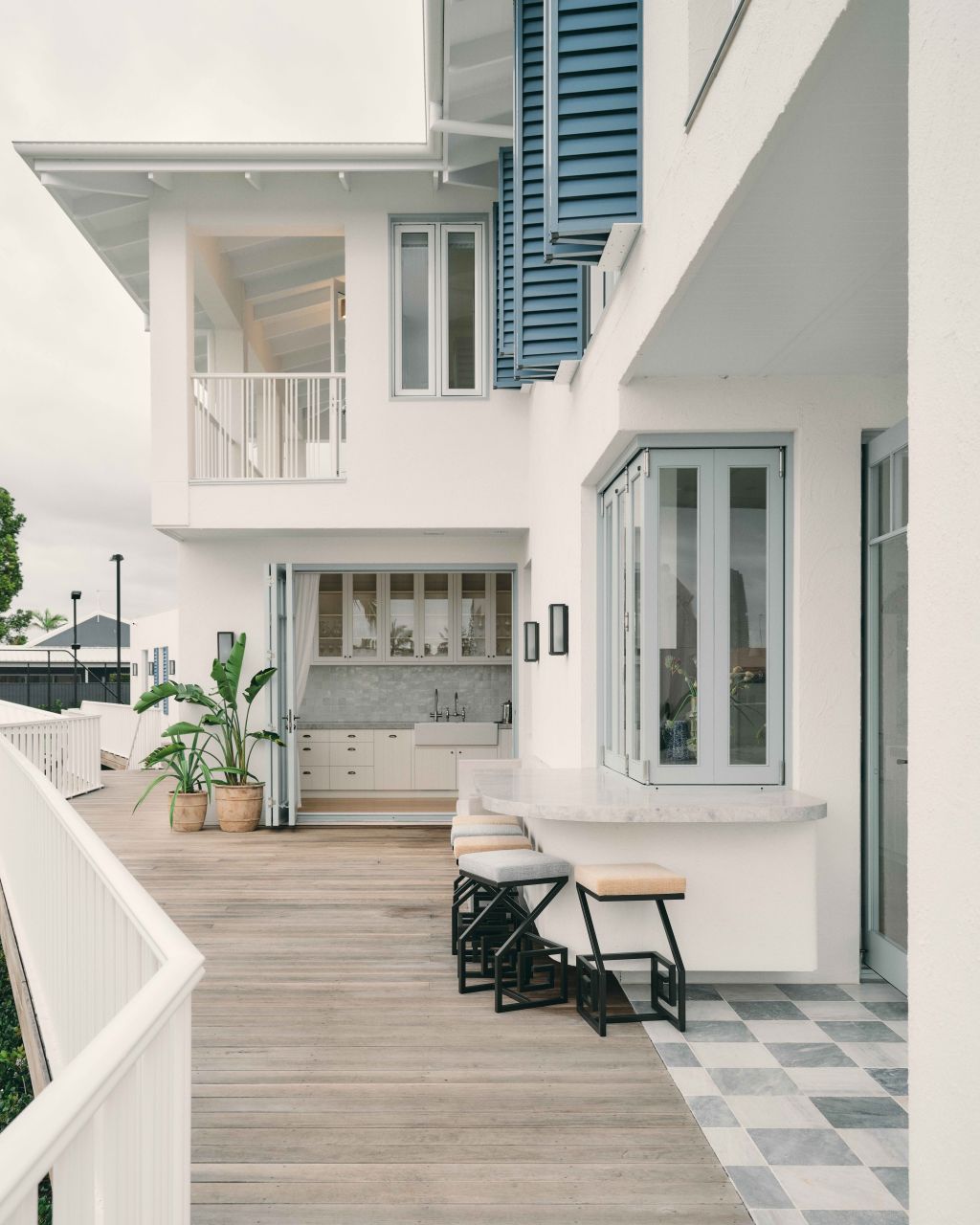
“It isn’t easy, as the line can be fine,” she admits. “I always judge [a piece] based on its singular inherent beauty. Is it artful or decorative, and does it have some voice in the dialogue of the space?
“You can see if something was made without joy, and those pieces will often be cliched.”
Rattan GUBI floor lamps and an iconic Marcel Breuer Wassily chair in the living space lend an eclectic touch to the home’s relaxed aesthetic. In the adjacent dining space, vintage pyramid dining chairs imbue a quirky vibe, and each bathroom makes its own statement, styled with various antique mirrors and earth-toned chequerboard tiling.
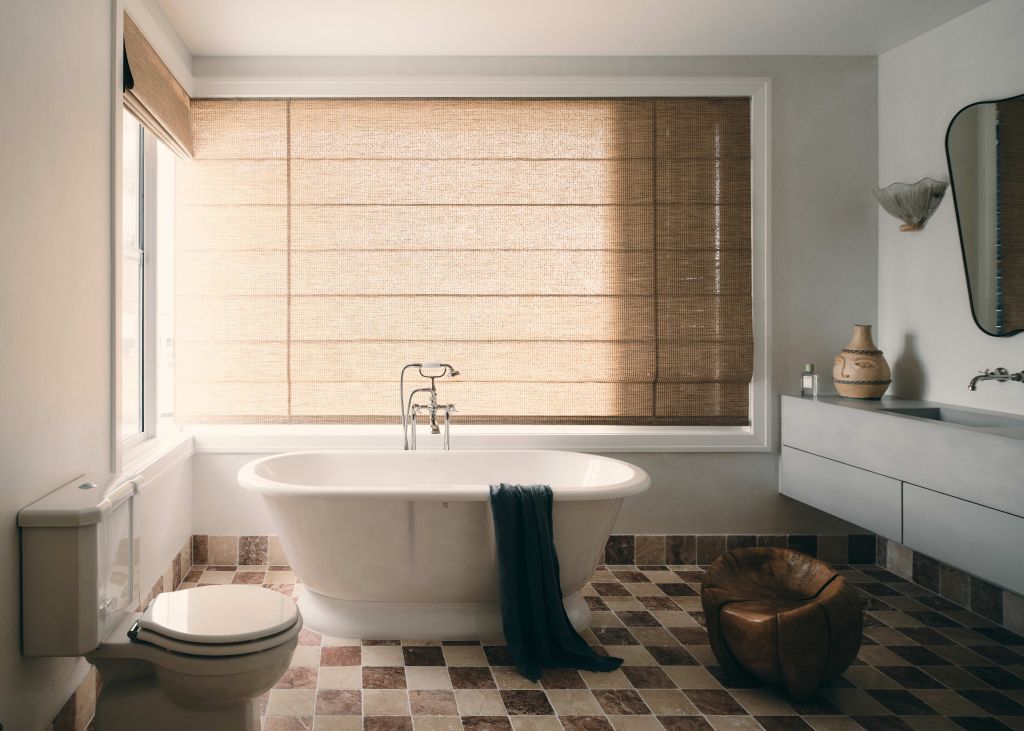
“So much is to do with the quality of the finishings,” Johnson says. “The furniture and fittings bring great strength to the space.”
The home’s living spaces face the water through large verandahs and deep awnings, and pull the outdoors inside. Natural light also filters through a vast lightwell at the entrance, as well as generous French windows and doors.
Inside, Johnson’s ambient lighting choices, including wall sconces and pendant and floor lamps, elevate the home’s coastal style and tranquil atmosphere.
“Good lighting offers a sense of calm,” she says, adding that greenery is also important for accomplishing a contemporary coastal aesthetic.
“A single plant provides a sculptural significance far beyond what people can achieve in art and design. Plants seem to transgress interiors and speak more to our souls in that regard, but they need to work into the fray, into the conversation; they pull the outside in.
We recommend
States
Capital Cities
Capital Cities - Rentals
Popular Areas
Allhomes
More
- © 2025, CoStar Group Inc.

